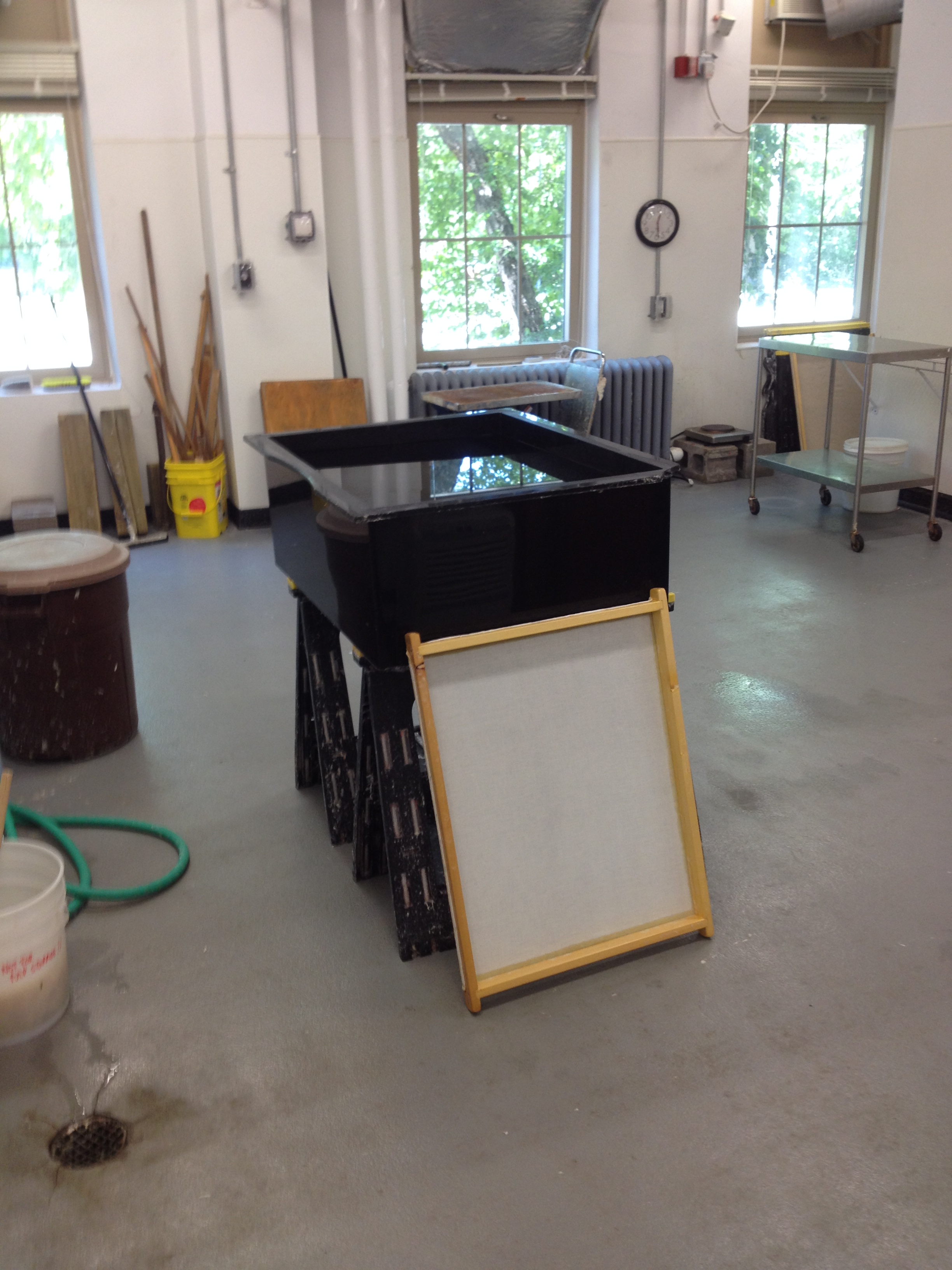University of Iowa Center for the Book

Last week I rode into Iowa City on Tuesday morning. The ride up from Texas had been really hot and I was in light pants and a t-shirt under my riding suit. I'd left the back vent open and was chilled to the bone an hour after starting at 6:30 that morning. I had to stop, drink coffee and eat to thaw. The temperature was in the 60s but I'd been riding in the 90s and 100s previously and I wasn't prepared for such cool weather.
After that, it was a pleasant 200 mile ride to the Paper Lab in Coralville, just a few miles from the main campus. Tim Barrett, director of the Center for the Book, paper scholar and master papermaker was expecting me. I stowed my motorcycle gear, donned my tennis shoes and headed into Iowa City to have lunch with Cheryl Jacobsen, a very talented calligrapher and instructor at the Center for the Book. I was invited to speak at the start of Cheryl's beginning calligraphy class that evening and we had a pleasant talk about what I'm trying to do. Cheryl's classes are well attended and it's gratifying to see that calligraphy and lettering are getting the attention of students today.

After lunch, I visited the conservation lab at the library. My good friend, Giselle Simon has been at the library for 3 years after working at the Newberry Library in Chicago. This is a small world and people I've known at one place often end up somewhere else. This phenomenon will repeat itself as I continue to travel East. Giselle's a talented conservator and book artist and runs a pretty happy department at Iowa. I was fortunate to meet a few of the technicians and learn of their own skills and interests. A conservation lab often has talented technicians that work every day at the bench to conserve and preserve the library's material. I enjoy seeing how people use their work skills in their own efforts.



Tim Barrett is a thoughtful and meticulous craftsman with a strong interest in the aesthetics of historic paper. He has spent quite a few years making papers that emulate Renaissance era paper. Two videos from 2013 and 2014, document the UICB paper lab's attempts at making 2,000 sheets in a day. One of the things they learned that old rags are more porous and allow for better drainage than fresh material. And a paper mill had support staff beyond the three people at the vat. It took a team of 11 or more people to produce 2,000 sheets in a day.
Writing about historic craft processes is often done without the experience of doing that craft and approaching duplication of materials, techniques and conditions present in the period being studied. Tim and his team took the time and effort to investigate the question by doing. This kind of research is useful as it tests theories with experience.

As you may have guessed from this long post, I'm interested in paper. Was the paper used in writing manuals different than printed books of the same period and locale? What qualities are needed to get a good impression from a woodblock or a copperplate? Did the printmaking process require a different tooth or surface? More sizing or none?
I asked Tim these questions as a means of developing some sensibility to the substrate that writing manuals were recorded. I've been photographing paper surfaces and looking at smooth/rough and thin/thick papers to gather information. I'll report back later after I've seen quite a few more books.
